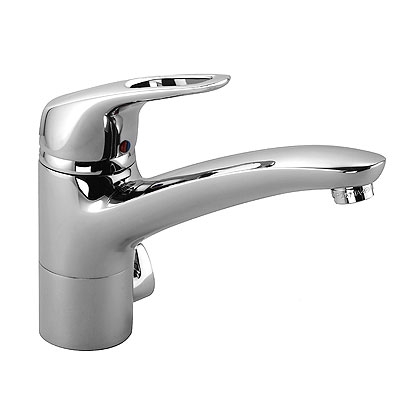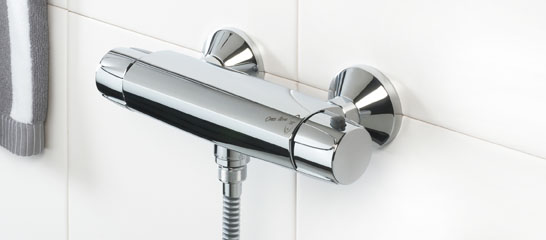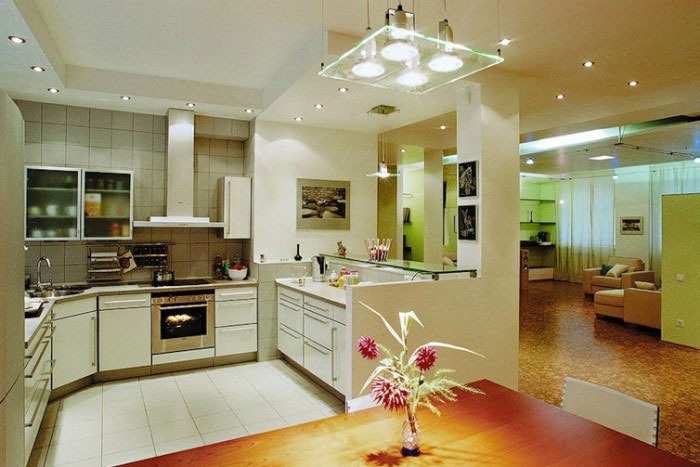Faucets, how to choose a faucet?
Have you ever wondered how many times a month or even a week you turn the water on and off? According to statistics, a family of 4 turns the water on and off about 200 times a week. Now you can imagine that not every mixer tap is able to withstand such a load. Buying every year or even more often a faucet for the kitchen or bathroom is wasteful and unnecessary. It is enough to immediately choose a quality faucet. What you need to know to choose a mixer? What to look for and, in general, what are these mixers?
Types of mixers, what mixers are.
You need to understand that modern mixers are fundamentally different from their predecessors made 10-15 years ago.
By the way, a mixer tap, a tap, a mixer is a household designation for devices, experts call them - water fittings.
First of all, mixers are classified according to the location of the pipes supplying water and are either vertical or horizontal installation.
By design, mixers are of several types.
1. single-lever, in such mixers the water is adjusted with one handle;
2. two-valve, these are the very familiar to us taps with two axle boxes, for cold and hot water;
3. thermostatic, which supply water set by the temperature controller, a very convenient solution
4. non-contact, which supply water automatically by means of a motion sensor. (activated automatically without the touch of a hand).
Double valve mixers.
This type of mixer taps are still popular. One of the reasons is the lower cost and the usual form, so to speak, a classic. If your bathroom is country style, then the newfangled single-lever faucets will not match the overall style.
Two-valve faucets are based on a device that passes a stream of cold and hot water through itself separately, such a device is called an axle box. Then, in the faucet body, immediately before the outlet, cold and hot water are mixed.
Separately, it is worth dwelling on the material for such cranes. Practical experience of use has shown that brass is the most acceptable material for the manufacture of the faucet body. So brass does not corrode and does not contain inclusions harmful to humans. The mechanical resistance of this metal is high, in addition, brass is easily processed and easily cast. For external beauty, the mixer is covered with chrome, as the most durable and hygienic material. There are artificially aged models, this effect is achieved using aged bronze and chrome plating with a scratch effect.
The well-known minus of two-valve faucets is the gasket, which must be systematically changed so that the faucet does not “leak”. Also, the minus of these taps is a large number of turns (6-7), so it is very difficult and long to set the water at the desired temperature.
Modern two-valve faucets have ceramic valves. These valves are devoid of the shortcomings of the axle box. Their rotary drive has only 90 degrees, i.e. quarter turn.
Modern single-lever mixers.

A very common and popular type of faucet. Their principle of operation is the use of a mechanism that regulates the amount of water pressure by raising and lowering the handle up and down. The water temperature is adjusted by turning the knob left and right. Such a mechanism is called a ball mechanism, since water enters them through two inlets into a hollow ball, usually made of stainless steel. Water comes out of one hole larger than the inlet.
Single-lever faucets are the most popular type, its popularity is due to ease of use. The downside is the high sensitivity of the faucet mechanism to water quality. An ordinary coarse filter, which is placed immediately in front of the water meter, can extend the life of such taps.
Thermostatic mixers

An extremely convenient type of faucet, since the water comes out at a strictly set temperature, you do not need to waste time to set it up. A huge plus is the safety of such a crane for the user. I think everyone has had situations when taking a shower you were burned by a jet of hot water. This happened due to the fact that water was flushed in the neighboring kitchen or even in the toilet. Thermostatic faucets will instantly respond to changes in cold water flow and reduce the amount of hot water emitted.
Structurally, the thermostatic mixer has two handles. One knob regulates the water pressure, the second one sets the water temperature. At the heart of this system is a thermoelement, which regulates the amount of cold and hot water.
The disadvantage of such mixers is the high cost.
Automatic or touchless faucets.

As it is not difficult to guess from the name of this faucet, the main difference between an automatic faucet and a thermostatic faucet is that the former do not require physical contact to turn the water on or off. Special infrared sensors are responsible for the automatic switching on of the mixer, which record the movement of a person's hand. Such mixers require electrical energy to work - batteries or a mains connection.
The most expensive models have a touch screen that allows you to set the temperature and water pressure.

What to do if your gas lawn mower won't start 






